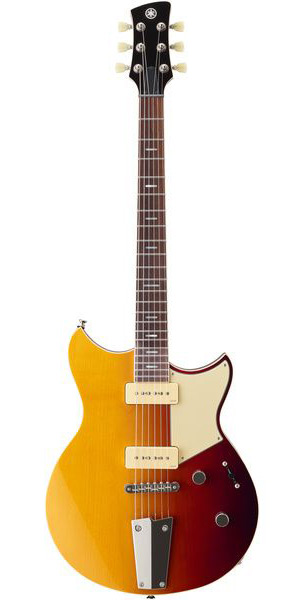PART I: NEVER STANDING STILL
The Revstar story begins in a converted pickle factory in England.
Located a short walk from The Oval cricket ground in leafy South-West London, the building is home to forpeople–a bold creative agency enlisted by Yamaha to collaborate on the design and marketing of a new range of electric guitars. Forpeople proposed multiple creative directions, including guitars with a raw, utilitarian appearance influenced by 1960s motorcycle culture. This concept inspired Yamaha’s global guitar development team, ultimately resulting in the creation of the Revstar series.
Beginning in 2013, we listened to as many guitarists as possible. Over hundreds of interviews, we asked about the factors that inspired the purchase of their last guitar, and what features they wanted in their next. Among preferences for scale length, tonewoods, fret size, and pickup selection, another key topic emerged: the balance between classic and modern. Many players wanted something unique to complement their collection, but not necessarily a radical departure from traditional influences. This became a guiding principle in the development of Revstar: to create something “just different enough.”
An appreciation for Japanese designs from the ‘60s, ‘70s, and ‘80s was a recurring theme. Influences emerged from across Yamaha’s entire electric guitar history, including the headstock of the 1966 SA15; the double cutaway of the iconic SG1000/SBG1000; the contoured scratchplate and offset silhouette of the Super Flighter series from the late ‘70s.
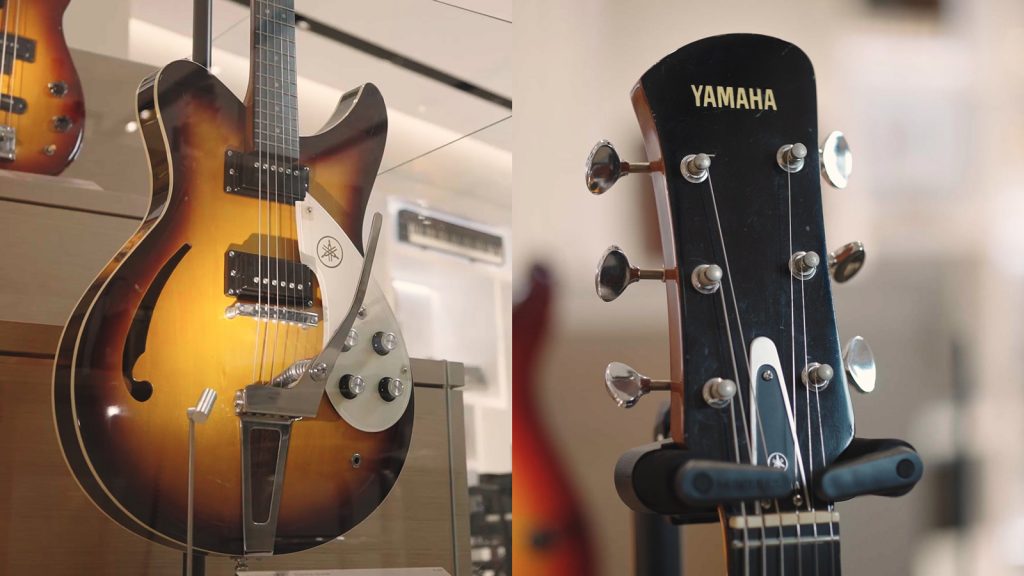
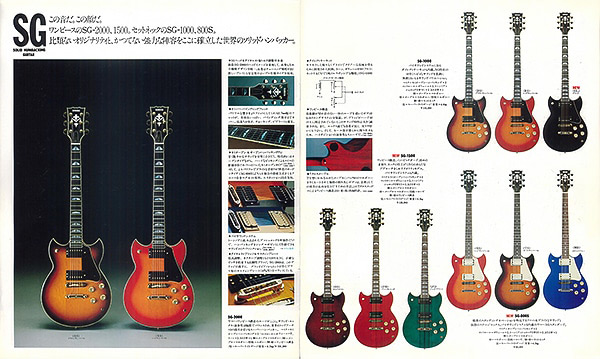
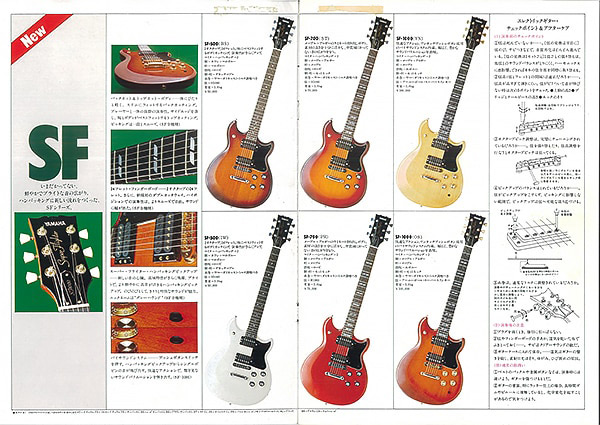
As the body took shape, we were equally focused on finishes and hardware to establish a distinct identity for the series. We took inspiration from classic motorcycles, particularly the café racers that were especially popular in 1960s London. The high-performance bikes had a stripped-down aesthetic but were often heavily customized to express the personality of their riders. This influence evoked the unique scope of the Yamaha brand, with a guitar heritage extending back to 1966, and a history of motorcycle design beginning with the YA-1 in 1955.
The connection even inspired the series name, referencing both the revving of an engine and the “Revs Your Heart” brand slogan of the Yamaha Motor Co., Ltd.
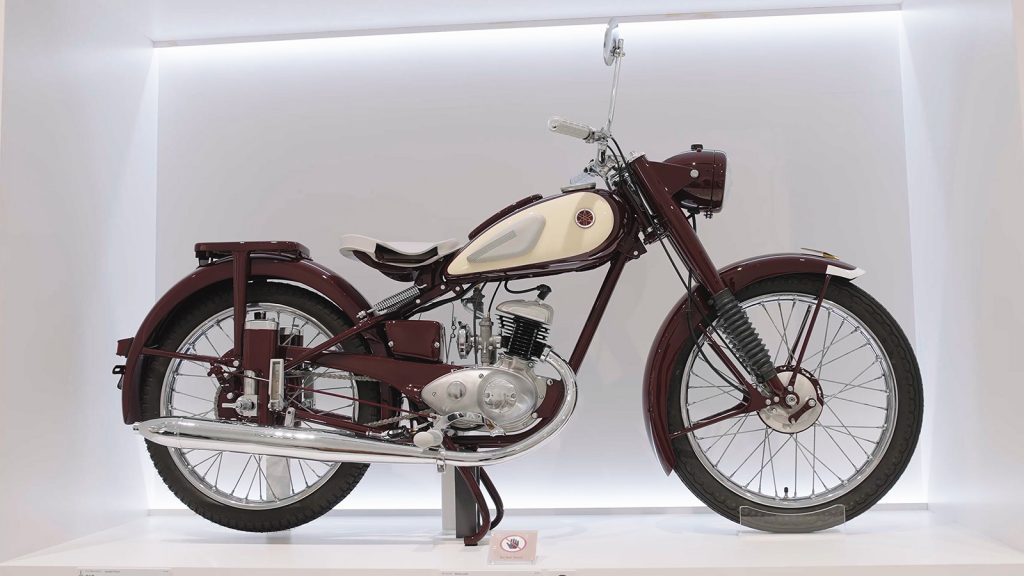
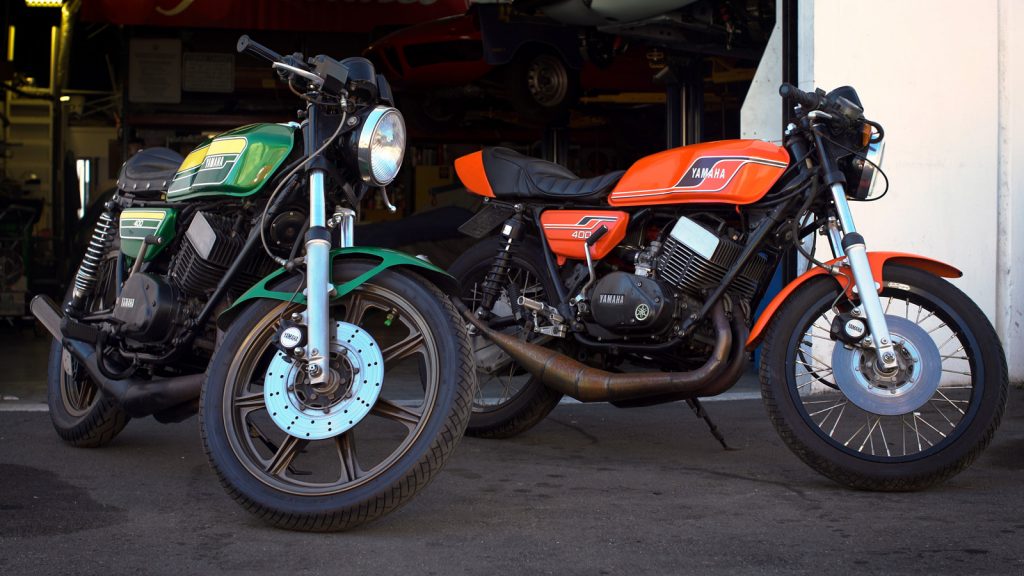
The café racer concept also informed the choice of colors and custom hardware. With details like hand-cut steel wool finishes and the raw copper pickguard on Revstar Professional, the guitars were designed to wear in quickly so that every instrument would become highly personalized to the guitarist playing it. We built dozens of prototypes, experimenting with shape, material, and color to arrive at final designs that wore their influences proudly, yet had their own distinctive identities.
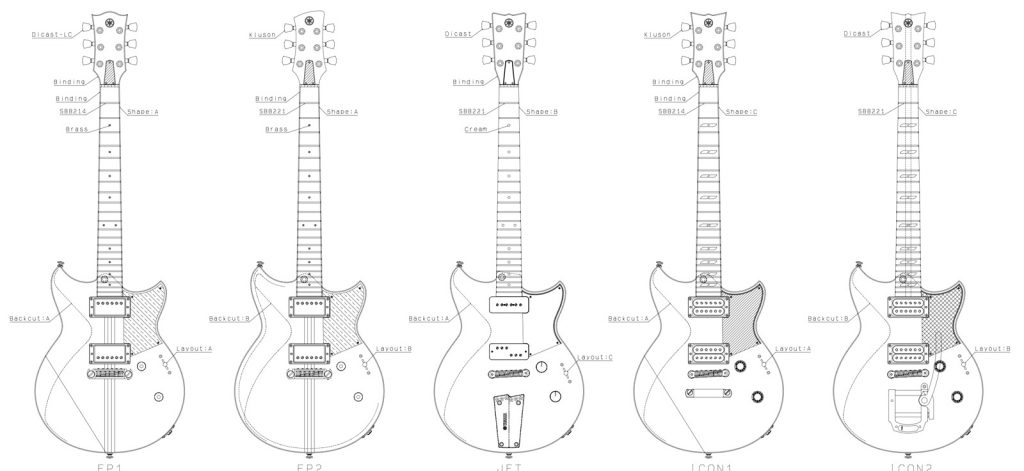
Every model in the original Revstar range featured custom-designed pickups. We experimented with the magnet, baseplate, wire turns and coating, and DC resistance to give each guitar a unique voice. The high-powered ceramic magnets in RS320 were conceived in part to help give newer guitarists more volume while they developed picking and fretting techniques–but they also pair perfectly with a high-gain tube amplifier for modern tones. The RS502T, which emerged as a popular favorite, featured P90-style single-coils that could sing or snarl. The RS720B featured underwound humbuckers–2500 turns of heavy formvar wire on the neck pickup and 2900 on the bridge–for a vintage voice that paired perfectly with the Bigsby B50 bridge.
The series also introduced the Dry Switch high-pass filter. Designed and voiced specifically for Revstar, the circuit cut low frequencies to provide tighter bass and brighter tones. As a filter, the Dry Switch offered several advantages over a coil split: there was no drop in power, no increase in noise, and the circuit could be used with the single-coil pickups on RS502 and RS502T.
By design, there wasn’t one single “Revstar sound.” Instead, each model was meticulously designed and voiced so the series could appeal to a wide and eclectic range of musicians. This approach informed another key collaboration with forpeople: the development of the “Meet Your Other Half” campaign. The simple half-guitarist/half-guitar aesthetic was based around the idea that matching the right artist with the right instrument could provide an inspiring combination across many genres.
Revstar officially launched in December of 2015. The guitars were well-received, and the series won both the prestigious iF Design Award and the Red Dot “Best of the Best” Award for product design. A joint review of the RS820CR and RS502T in Guitar World stated: “While the fit and feel of Yamaha’s Revstar guitars are certainly impressive, what really knocked me out is how expressive and lively they both sound.” Premier Guitar reviewed the Japanese-built RSP20CR and said: “The Revstar is a well-realized, thoughtfully designed instrument that offers flawless craftsmanship, superb playability, stellar tones, and great sonic versatility.” The new series was also embraced by artists including Chris Buck, Graham Coxon of Blur, Lynval Golding of The Specials, Dave Keuning of The Killers, Matteo Mancuso, and Jeff Schroeder of Smashing Pumpkins.
These accolades and endorsements suggested that Revstar had achieved its goals of establishing a new electric guitar series and striking the delicate balance of classic and modern design to be “just different enough.”
PART II: A NEW GENERATION
As the original Revstar lineup expanded over the years with additional models and finishes, planning began for a complete series update that launched in early 2022.
Several changes are the direct result of player requests. The new Revstar Professional RSP02T, with its single-coil pickups and custom tailpiece, offers the essential configuration of the original RS502T on a professional-grade instrument built by Yamaha’s master luthiers in Japan. The RSS20L and RSE20L open the series to left-handed guitarists. Satin neck finishes replace the original gloss for guitarists who prefer a lower-friction feel.
The updated lineup offers a new selection of racing-inspired finishes, each with at least one “vertical element” as a visual signature for the series: low-contrast or high-contrast racing stripes, the custom tailpiece on RSP02T and RSS02T models, or the distinctive gradients in the Moonlight Blue and Sunset Burst finishes.
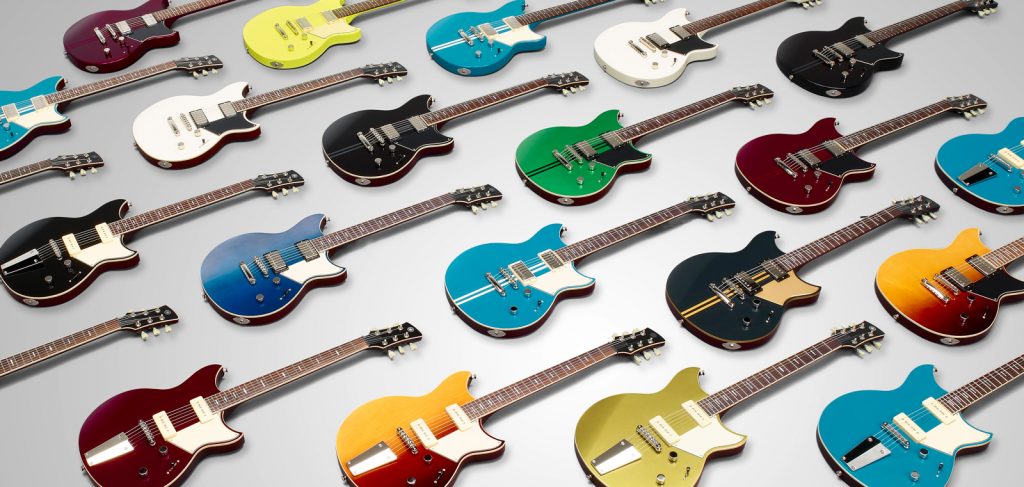
The most significant change is below the surface and takes advantage of Yamaha’s extensive resources and expertise in engineering and materials research. Every new Revstar features a chambered body. This technique is widely used to lower weight, but its application in the new Revstar series goes further. The chambering pattern was developed through our exclusive Acoustic Design process. Used to develop everything from new acoustic guitar bracing patterns to the ergonomic body shape of TRBX basses, Acoustic Design uses advanced measurement and modeling tools to design components that will precisely sculpt tone and increase resonance.
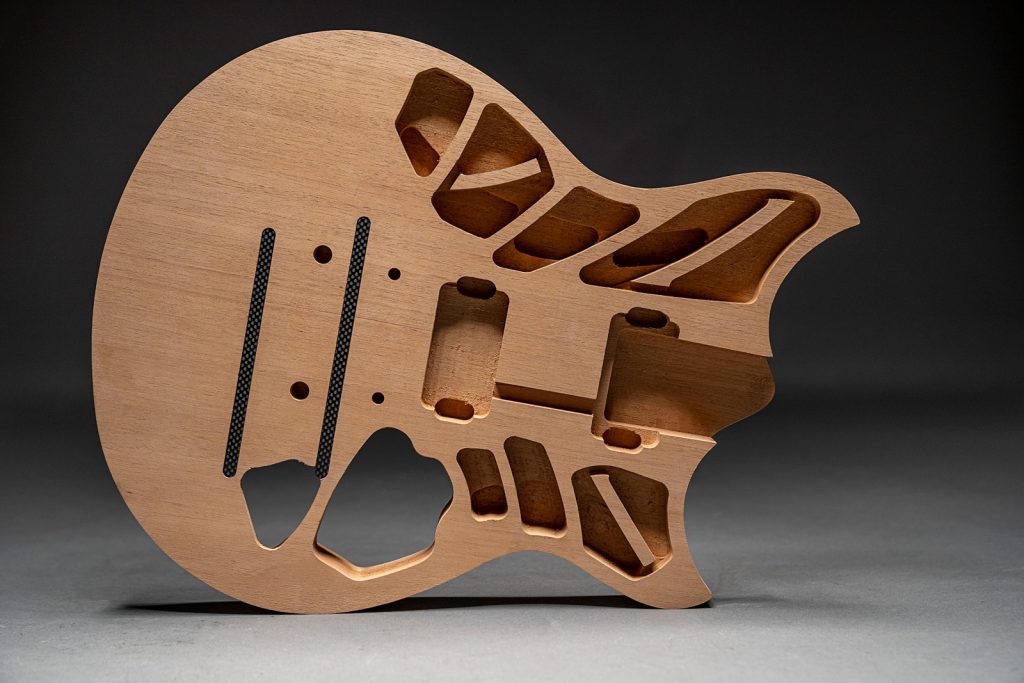
Two exclusive circuits also debut on Revstar Professional and Standard models.
These two-pickup guitars feature 5-way switching, offering the versatility of three-pickup guitars. The passive switching circuit introduces capacitors in positions 2 and 4 to subtly shift the phase relationship between the pickups. Instead of the traditional “quack” of conventional reverse-wound, reverse-polarity pickup combinations, the Revstar circuit evokes the vocal quality of fixed wah filters for new flavors of classic “in-between” sounds.
The Professional and Standard tiers also feature the new Focus Switch boost. Activated with a push/pull switch on the Tone control, the passive circuit rounds off high-end while increasing bass and midrange. The result is a dark, full sound that complements everything from warm jazz tones to pushing a tube amp into thick overdrive.
Early impressions of the new Revstars are positive. “At first, I thought I was completely stuck to other types of guitars,” said artist Naia Izumi of the RSP02T. “And next thing you know, I pick up something and I’m like, oh wow, I think this might be my thing.” That sentiment is shared by JUNO the Artist. After evaluating an RSS20, she observed: “When you’ve played the same guitar your whole career, you kind of expect you’re not going to like anything else, but I love the diversity, and it feels kind of like a blank paper and I can do anything.”
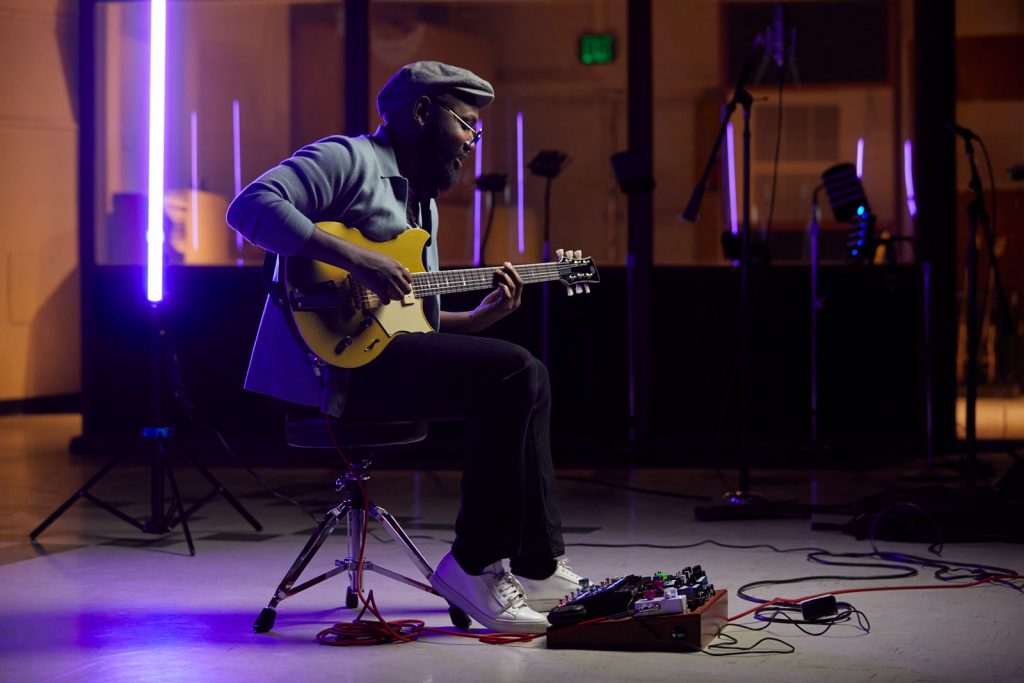
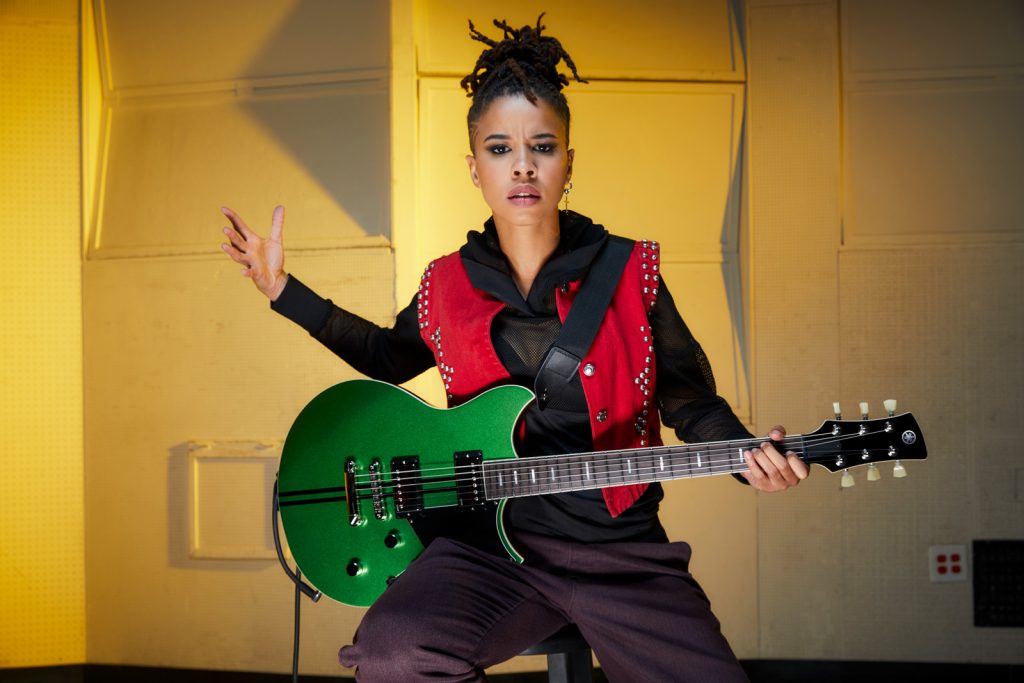
Artists are embracing the flexibility of the new switching options, but the additional resonance resulting from the Acoustic Design chambering is making impressions as well. “I think the biggest difference I’ve seen between the new Revstars and the old one is just a consistency in terms of resonance and liveliness under the fingers, which is just incredibly inspiring to play,” said Chris Buck. “All my favourite guitars have that quality in them, that sort of just dynamic response and attack and just a resonance which then translates whether you’re playing acoustically or whether you’re playing plugged in. And for me, that was very much what the Revstar absolutely nailed.”
For Chris, this second generation of the Revstar series also achieves its central goal of being just different enough. “It’s not a guitar that tries to emulate other guitar sounds,” he says of the new series. “It’s just entirely its own thing.”



